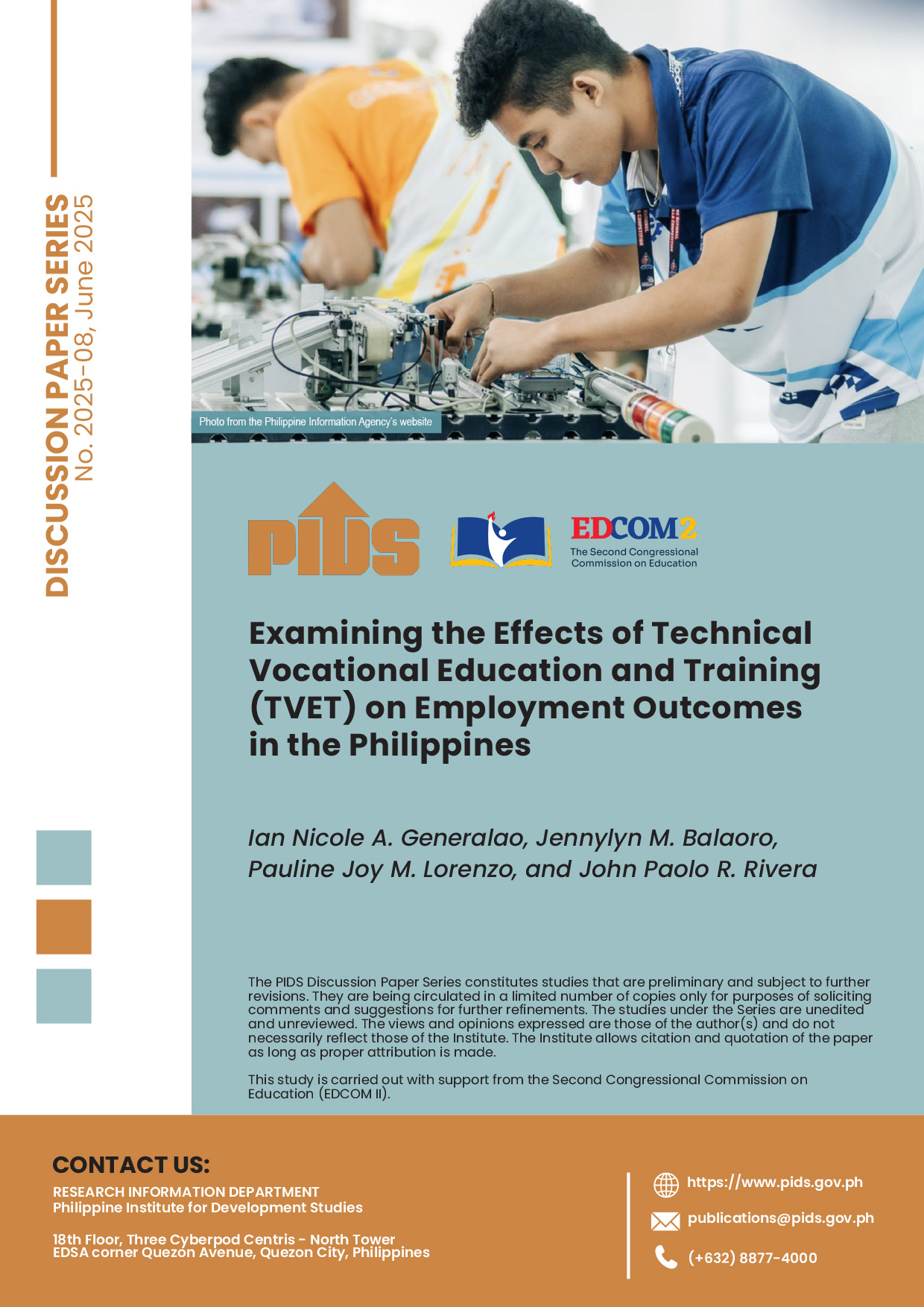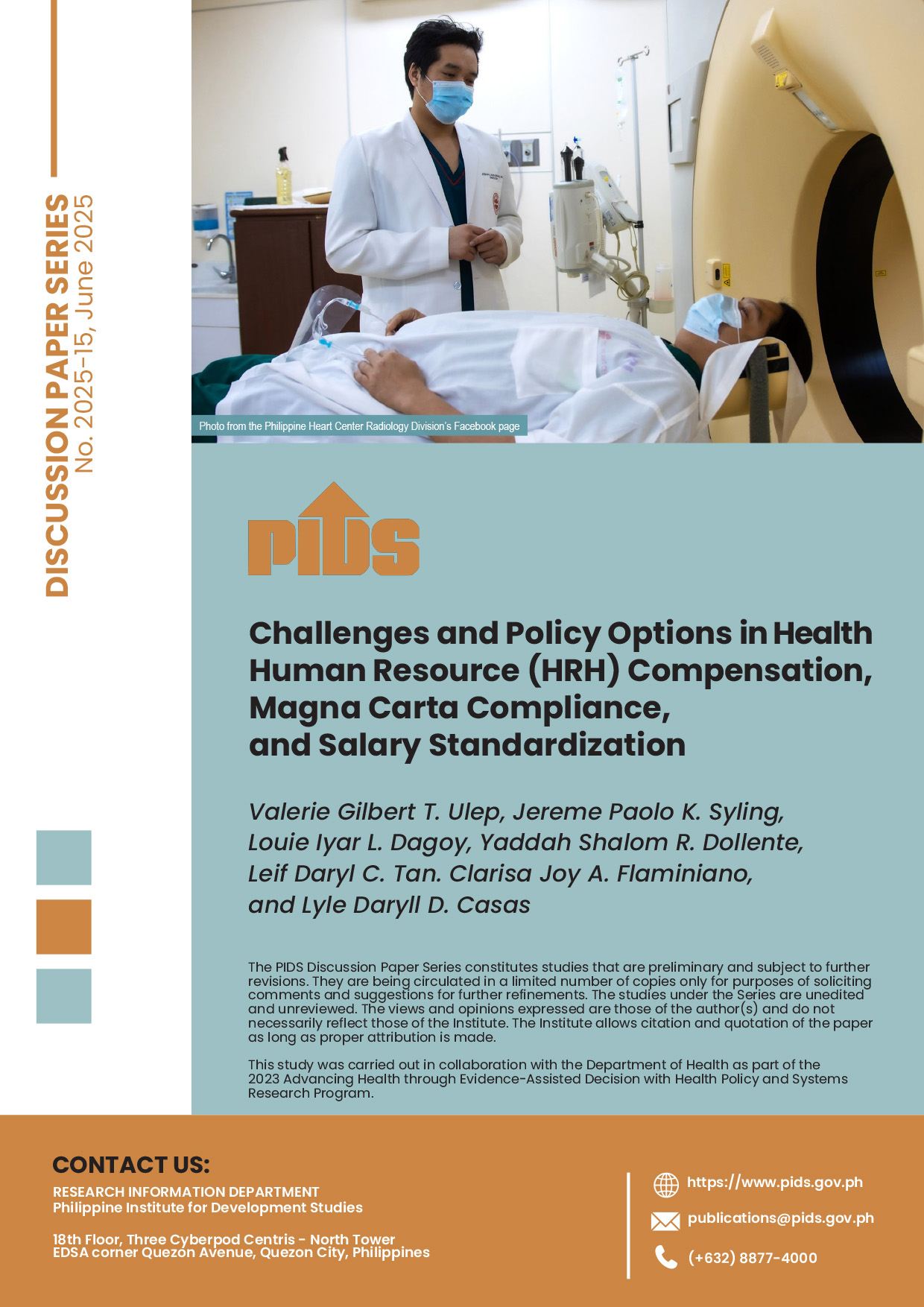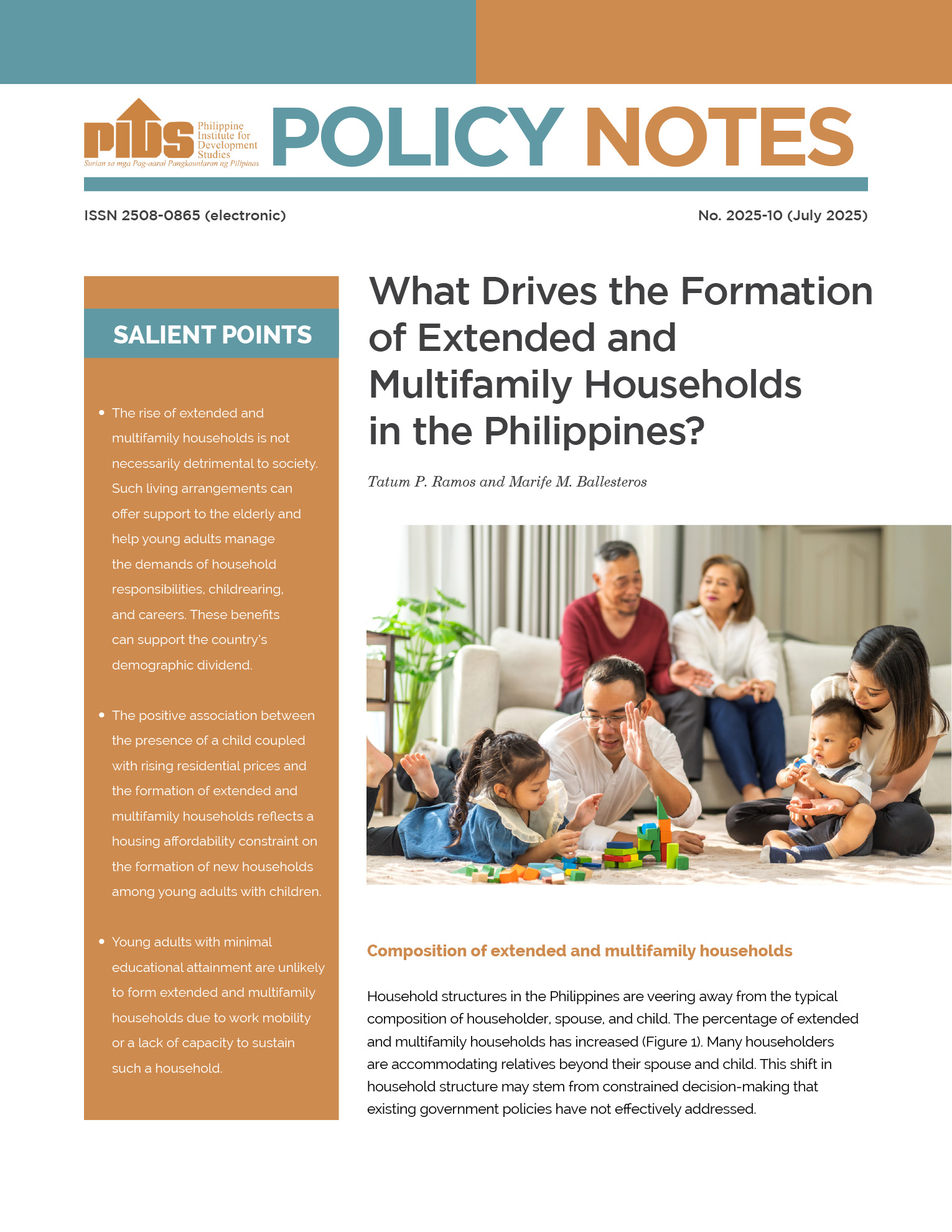This paper demonstrates how family size can be an important contributor to poverty in the Philippines. It examines one of the mechanisms behind this link by focusing on the relation between number of children and the decision to seek a job and parents' wage earnings. It surveys the international literature to establish how the problem has been approached and what the results are for other countries. It then formulates and tests a model using a nationally representative household survey data for the Philippines to explain what determines the decision to seek a job and the earnings of both mothers and fathers. The model specifically considered the endogeneity of the number of children in both the labor force participation and the earnings equations.
Citations
This publication has been cited 12 times
- Ajefu, Joseph Boniface. 2019. Does having children affect women’s entrepreneurship decision? Evidence from Nigeria. Review of Economics of the Household, 17, no. 3, 843-860. Springer.
- Besamusca, Janna. 2015. Working women worldwide: Age effects in female labor force participation in 117 countries. World Development, 74(C), 123-141. Elsevier.
- Cabegin, Emily. 2006. The effect of Filipino overseas migration on the non-migrant spouse’s market participation and labor supply behavior. IZA Discussion Papers 2240. Institute of Labor Economics (IZA).
- Cepal. 2020. Brechas de género en los ingresos laborales en el Uruguay. Coediciones, Naciones Unidas, 45792. Comisión Económica para América Latina y el Caribe (CEPAL).
- Dacuycuy, Connie B.. 2017. Energy consumption, weather variability, and gender in the Philippines: A discrete/continuous approach. Discussion Papers DP 2017-06. Philippine Institute for Development Studies.
- de Jong, Eelke, , Jeroen Smits, and Abiba Longwe. 2017. Estimating the causal effect of fertility on women’s employment in Africa using twins. World Development, 90(C), 360-368. Elsevier.
- Gammage, Sarah. 2015. Labour market institutions and gender equality. Labour Markets, chapter 12, 315-339. Edward Elgar Publishing.
- Giang, Long Thanh, Van Tuong Nguyen, and Tue Dang Nguyen. 2021. Child labor in Vietnam: Issues and policy implications. Children and Youth Services Review, 130(C). Elsevier.
- Orbeta, Aniceto C. Jr.. 2006. Children and household savings in the Philippines. Development Economics Working Papers 22672. East Asian Bureau of Economic Research.
- Orbeta, Aniceto Jr.. 2006. Children and household savings in the Philippines. Discussion Papers DP 2006-14. Philippine Institute for Development Studies.
- Sylvester, Michelle Sheran. 2007. The career and family choices of women: A dynamic analysis of labor force participation, schooling, marriage and fertility decisions. Review of Economic Dynamics, 10, no. 3, 367-399 . Elsevier for the Society for Economic Dynamics.
- Yap, Josef T. and Ruperto P. Majuca. 2013. Aspirations and challenges for economic and social development in the Philippines toward 2030. Discussion Papers DP 2013-27. Philippine Institute for Development Studies.













